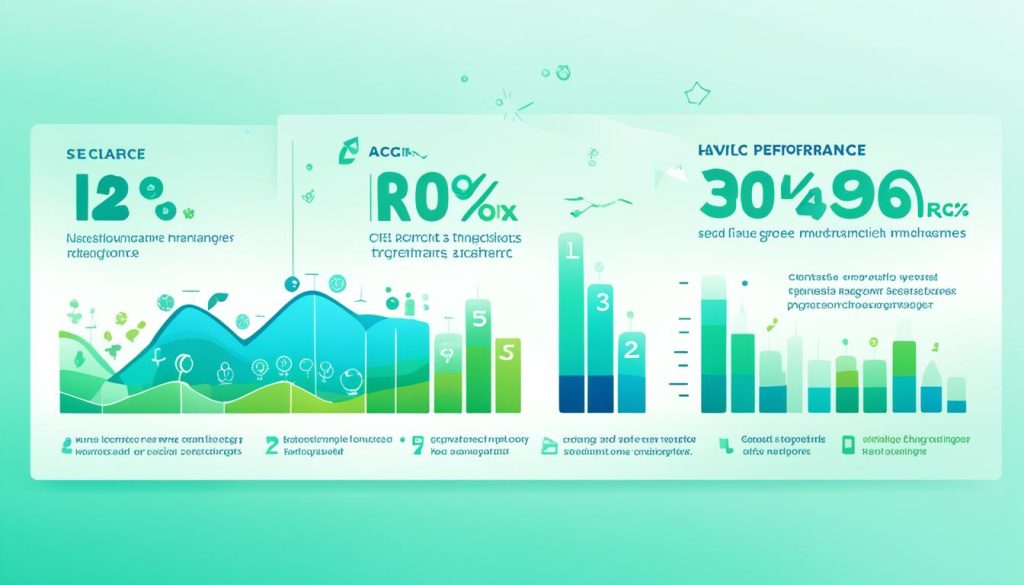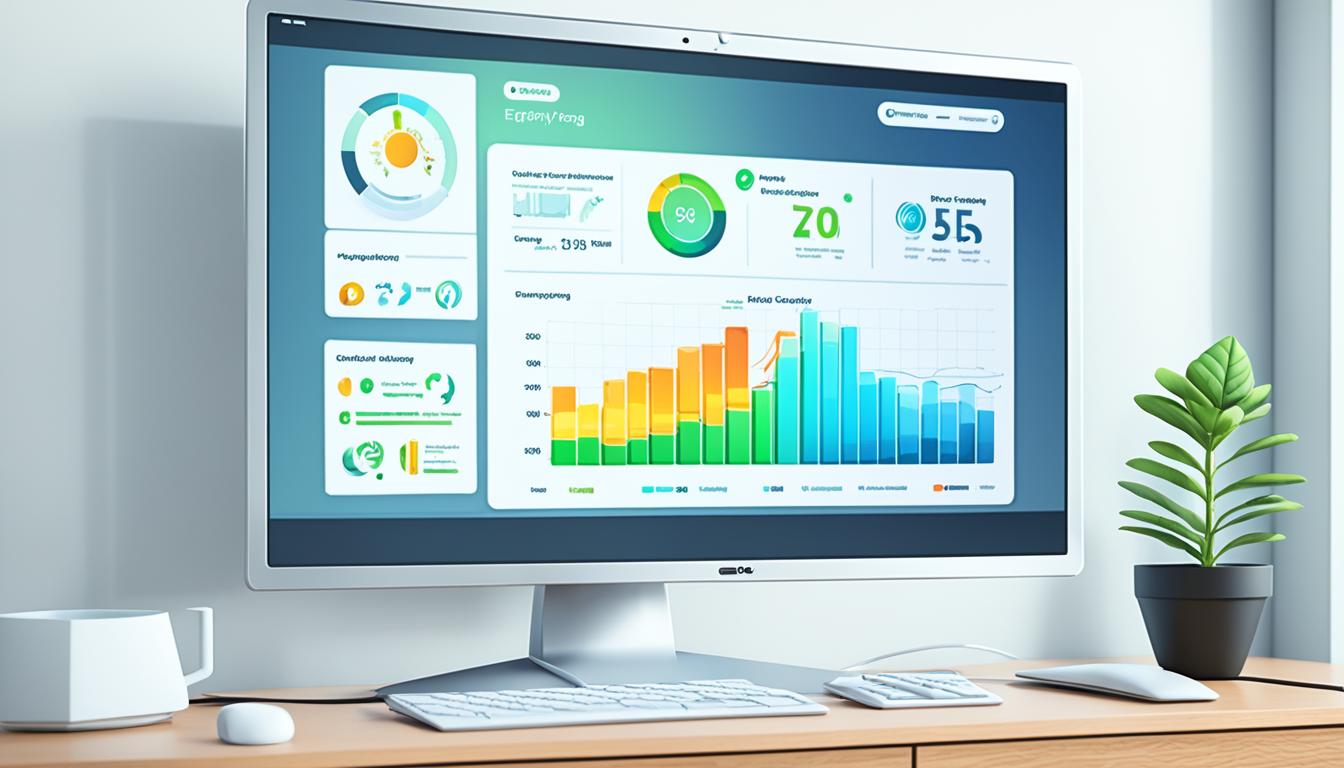Choosing the right HVAC equipment is easier with software catalogs. These tools help you pick the best heating, ventilation, and air conditioning systems for your projects. Just follow a simple step-by-step guide.
With HVAC selection software and equipment catalogs, you have all the info you need. You can enter project details, compare different options, and size systems correctly. This makes the process faster and ensures your choices are efficient and effective.
To succeed, learn how to use these platforms well. Start by collecting important building data. Then, do load calculations and check energy ratings. With time, you’ll get good at picking the right HVAC equipment for your clients or projects.
Understanding HVAC Software Catalogs
HVAC software catalogs are digital tools that change how you pick and manage heating, ventilation, and air conditioning gear. They give you lots of info right at your fingertips. This makes picking the right HVAC systems easier and more precise.
What are HVAC software catalogs?
HVAC software catalogs are big digital databases full of HVAC product details. They let you quickly find a wide range of equipment info, like how well they work, their size, and if they fit together. These catalogs make it easier to look at and compare different HVAC products. This saves you time and cuts down on mistakes in choosing.
Benefits of using digital catalogs for HVAC selection
Using digital catalogs for picking HVAC has many benefits:
- Quick access to the latest product info
- Easy way to compare different HVAC models
- Right sizing and performance figures
- Less chance of making specification mistakes
- Smaller project planning and design
Popular HVAC software catalog platforms
Many HVAC software tools are popular in the field. Here’s a look at some well-known ones:
| Software | Key Features | Best For |
|---|---|---|
| Carrier HAP | Load calculations, energy modeling | Comprehensive system design |
| Trane TRACE | Building performance analysis, cost estimation | Energy efficiency optimization |
| ASHRAE Duct Size | Ductwork sizing, pressure loss calculations | Specialized duct system design |
These HVAC software tools give you strong features to make your equipment selection smoother. By using these digital catalogs, you can make smart choices based on precise HVAC product specs. This ensures your systems work well and save energy for your projects.
Preparing for HVAC Equipment Selection
Before you start picking out HVAC equipment, make sure you’re ready. This means planning and gathering all the needed info. This ensures your HVAC system fits your project’s needs.
Determining Project Requirements and Constraints
First, list what your project needs. Think about the temperature, humidity, and air quality you want. Also, remember any budget or space limits that could affect your choices.
Gathering Essential Building Information
Get all the details about your building for HVAC load calculations. This includes:
- Building dimensions and layout
- Insulation values of walls, roof, and windows
- Occupancy patterns and equipment usage
- Local climate data
Identifying Critical Success Factors
Set clear goals for your HVAC system. These could be saving energy, keeping a certain comfort level, or getting environmental certifications. Knowing these goals helps you make better choices during selection.
Good preparation is key to getting the right HVAC system size. Taking the time to collect all the info you need makes choosing equipment easier. It also leads to a better HVAC solution.
Performing HVAC Load Calculations
HVAC load calculations are key to figuring out the right heating or cooling your building needs. You must estimate the heat gain or loss from different sources. This ensures your HVAC system is the right size.
- Solar radiation
- Outdoor air temperature
- Occupant activity
- Lighting and appliances
- Building envelope insulation
Getting accurate calculations means your HVAC system will work better and save energy. You can use manual methods or tools like Carrier HAP or Trane TRACE for these calculations.
Here’s how to do HVAC load calculations:
- Gather building information
- Calculate heat gain/loss for each space
- Determine peak load conditions
- Account for safety factors
- Size HVAC equipment based on results
Remember, precise HVAC load calculations are key to picking the right equipment. By doing these calculations right, your HVAC system will meet your building’s needs. This leads to better comfort and energy savings.
Navigating HVAC Software Catalog Interfaces
HVAC selection software and equipment catalogs have changed how professionals pick heating, ventilation, and air conditioning systems. These digital tools have easy-to-use interfaces that make choosing systems easier. Let’s look at how to use these powerful platforms well.
User Interface Basics
Most HVAC equipment catalogs have a simple, easy-to-use layout. You’ll see a main menu with options like residential, commercial, and industrial systems. The dashboard often shows items you’ve looked at recently and quick links to popular equipment types.
Search and Filter Functionalities
HVAC selection software is great at searching for products. You can filter products by things like capacity, efficiency ratings, or size. Some filters are even more advanced:
- Operating temperature range
- Noise levels
- Energy Star certification
- Refrigerant type
Comparing Multiple Equipment Options
A big plus of HVAC equipment catalogs is the ability to compare different units side-by-side. This lets you see the differences in performance, cost, and features. Many platforms let you save these comparisons for later or share them with clients.
| Feature | Basic HVAC Catalog | Advanced HVAC Selection Software |
|---|---|---|
| Search Filters | Limited | Extensive |
| Comparison Tool | 2-3 items | 5+ items |
| 3D Models | No | Yes |
| Energy Analysis | Basic | Detailed |
Select Equipment Using Software Catalogs
Choosing the right HVAC equipment is easier with software catalogs. These tools help you find the perfect match for your project. Just enter your needs, and you’ll see a list of suitable options from different manufacturers.
Begin by adding your heating and cooling loads into the software. This step filters out equipment that’s too big or too small for your space. Remember to check the Sensible Heat Ratio (SHR) for cooling units. It’s key for keeping the right humidity.
When looking at specs, pay attention to performance curves. They show how the equipment works under different conditions. Some software lets you compare units easily, making it simpler to see their differences in efficiency and size.
Think about these points when picking HVAC equipment:
- Energy efficiency ratings (SEER, EER, HSPF)
- Operating costs
- Physical dimensions and installation needs
- Noise levels
- Compatibility with your current systems
Don’t forget to adjust for ARI standard ratings if needed. These ratings are for specific test conditions that might not match your actual setup. Some software can do this automatically for you.
Using these HVAC software tools helps you make smart choices fast and efficiently. This way, you’re sure your equipment meets your project’s needs and goals.
Evaluating Energy Efficiency and Performance Ratings
Choosing the right HVAC equipment is key. It’s important to know about energy efficiency and performance ratings. These help you pick systems that save energy and cut costs. Let’s look at what to consider when checking HVAC performance ratings.
Understanding SEER, EER, and HSPF Ratings
SEER, EER, and HSPF are key for measuring HVAC energy efficiency. SEER looks at cooling over a season. EER checks cooling at peak times. HSPF rates heating efficiency. Higher ratings mean better performance and savings.
| Rating | Purpose | Ideal Range |
|---|---|---|
| SEER | Seasonal Cooling Efficiency | 16-21 |
| EER | Peak Cooling Efficiency | 11-14 |
| HSPF | Heat Pump Heating Efficiency | 8-10 |
Analyzing Equipment Performance Curves
Performance curves show how HVAC systems work under different conditions. They link temperature, humidity, and system capacity. By looking at these curves, you can see if a system stays efficient in various situations.

Considering Part-Load Efficiency
HVAC systems often work less than full capacity. That’s why part-load efficiency is important. Choose equipment with high part-load efficiency for better performance and energy savings. This means more comfort and savings for you.
By looking at HVAC energy efficiency and performance ratings, you can pick the best equipment. This ensures comfort, energy savings, and value for your needs.
Sizing HVAC Components with Software Tools
Getting the right size for HVAC components is key to a well-working heating and cooling system. HVAC software tools make this easier and more accurate. They help figure out the best sizes for different parts, making sure your system works well and saves energy.
When you use HVAC software for sizing, you enter details about your project. This includes room size, insulation, window details, and the local weather. The software then figures out the heating and cooling needs. This lets you pick the right equipment size.
Some important parts that need the right size include:
- Ducts
- Pipes
- Valves
- Pumps
- Coils
- Filters
- Dampers
Using HVAC software helps you avoid mistakes like using too big or too small parts. The right size means better comfort, less energy use, and lower costs for your clients.
Popular tools for sizing HVAC components are ASHRAE Duct Size and Elite Software. These tools are easy to use and give precise calculations based on industry rules. They help you find the best sizes for ducts, pipes, and more, cutting down on pressure loss and friction.
Getting HVAC components the right size is crucial for efficient heating and cooling systems. With HVAC software tools, you can make sure your designs work well and save energy.
Integrating Building Information Modeling (BIM) with HVAC Selection
BIM integration changes the game for HVAC design. It combines 3D modeling with HVAC software catalogs. This creates a powerful tool for planning and installing systems efficiently.
BIM and HVAC Software Catalog Integration Benefits
When you mix BIM with HVAC selection, you get better visualization and coordination. You can see how equipment fits in the building, cutting down on mistakes and making designs more accurate. It also means everyone has the latest info in real-time.

Workflow Optimization for Designers and Engineers
BIM makes designing easier. You can try out different HVAC setups, check their performance, and make smart choices fast. This saves time and helps architects, engineers, and contractors work better together.
Clash Detection and Spatial Coordination
One big plus of BIM is finding clashes early. You can spot and fix issues between HVAC systems and other building parts before starting construction. This way, you avoid problems on-site and keep projects on track.
| BIM Integration Feature | Benefit for HVAC Design |
|---|---|
| 3D Visualization | Improved spatial understanding |
| Real-time Updates | Enhanced collaboration |
| Clash Detection | Reduced installation conflicts |
| Performance Analysis | Optimized system efficiency |
Using BIM in HVAC design makes buildings more efficient, cost-effective, and green. It makes the design process better and raises the quality of the finished project.
Conclusion
HVAC equipment selection with software catalogs changes the game for engineers and designers. These tools make finding the right equipment for your project easy. By following a step-by-step guide, you can design high-performance HVAC systems.
Start by knowing your project well. Load calculations are crucial for choosing the right equipment size. After that, explore software catalogs. They offer many options, so take your time to compare features and efficiency ratings.
Adding Building Information Modeling (BIM) to the process is like giving your selection superpowers. It helps you find potential issues early, saving time and money.
Using software catalogs for HVAC selection is more than just picking parts. It’s about making spaces comfortable and energy-efficient. So, use these tools well, and see your HVAC designs improve greatly.





0 Comments